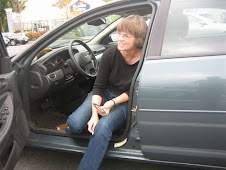I really don’t recall how, when or why I reserved Isabel Wilkerson’s The Warmth of Other Suns through the library. It just was there in the pile when I picked up a handful of lust list books. Very off topic but maybe subconsciously selected after a particularly bad spell of novels or just to read something by an award-winning author. Anyway, it was interesting and read quickly, despite its 600 pages, epilogue, afterword, lengthy list of interviewees, bibliography, acknowledgments ….
Wilkerson is mining the lives and effect of the great migration of Blacks from the South to the East, Midwest and Pacific coast. While she periodically intrudes with larger perspectives and interpretations, she essentially uses three real people to make the story real and illustrate certain outcomes she sees as typical of the people who migrated between 1915 and 1970. They are George, leaving the orange groves of Florida one step ahead of the sheriff and who settles in Harlem, becoming a porter; Ida Mae who moves at her husband’s insistence first to Milwaukee and then Chicago where she eventually comes to work in a hospital; and Bob, a successful surgeon who reinvents himself in California.
George and Ida Mae live in ghettos and their children and neighborhoods succumb to the ravishes of drugs and crime. Based on other sociologists analyses of the people most likely to migrate, Wilkerson concludes that these three people best typify the grit and determination that caused them to be gainfully employed, long married and financially secure. It was their resolve to make a better life for themselves and to earn more money than they ever could in a segregated, oppressive South, that ends up putting their children at risk, from absentee parents often working several jobs.
Wilkerson’s other theme is to explore how much of Southern heritage, culture and longing remained with the émigrés. Each of these people display both vestiges and full erasures.
Just as I was almost through the tome, the newspapers started reporting some findings from the 2010 census, most notably, a reverse migration. Not to suggest Wilkerson need write a volume two, but one throw away line, that the three people selected as representatives of the mass migration, never saw themselves as part of something larger or so designated themselves in their own minds. They were just Americans relocating to have a better life. Such personal economics would seem to be driving the population turnaround, tempered by Blacks having acquired a better education and finding Southern states more integrated and receptive.
I suspect again it is those most hopeful, most talented and most resilient who are reversing the population patterns. What I find more disturbing is that unlike those who remained rooted to Southern soil in the last century where there were still strong communities, extended if sparse families, and a common religion, those now abandoned in the Northern ghettos have no other web of support except for the government’s safety net, a system that fosters dependency and not grit.
Tuesday, March 29, 2011
Off List: Why Did They Head North?
Subscribe to:
Post Comments (Atom)



I've not read this but two of the book club members and my next door neighbor all have and said it was a good read. I like your comments on this, particularly the notion of identity and social cohesion. I don't know if public assistance per se is the bad actor but my guess is that there's some combination of learned helplessness and hopelessness and lack of a strong family structure that creates problems for folks and their communities. Years ago I did training on how to do"rehab" for welfare to work mom's who had some mental illness issues and in the work we did it seemed impossible to isolate any one issue that could be "addressed" to create a light at the end of the road for these women. I'm not surprised about the southward migration. Good every once and a while for the Slacker in Chief to go off-list!
ReplyDelete